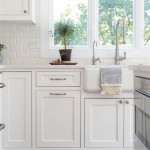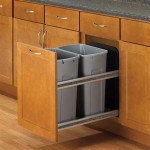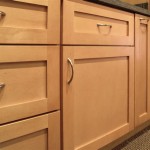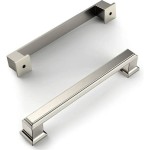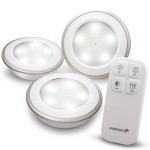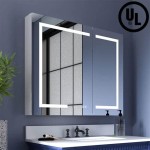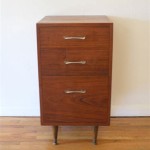Desk Base Cabinets With Drawers: A Comprehensive Guide
Desk base cabinets with drawers are a fundamental component of many workspaces, offering a blend of storage, functionality, and aesthetic appeal. They serve as the foundation for a desk setup, providing a dedicated space for organizing supplies, documents, and personal items. This article explores the various aspects of desk base cabinets with drawers, encompassing their types, materials, design considerations, functionality, and key factors to consider when selecting one for individual needs.
The primary function of a desk base cabinet with drawers is to provide storage within easy reach while seated at a desk. This accessibility distinguishes them from standalone storage units that may require the user to stand and move away from their workstation. By keeping essential items close, these cabinets contribute to a more efficient and organized workflow, reducing clutter on the desk surface and minimizing the need to search for frequently used materials.
The design and construction of desk base cabinets with drawers have evolved over time to meet changing needs and preferences. From simple, utilitarian models to more elaborate and aesthetically pleasing designs, the options available are diverse. The selection of a suitable cabinet depends on factors such as the overall style of the workspace, the amount of storage required, and budget constraints.
The importance of ergonomic considerations cannot be overstated when choosing desk base cabinets. The height and placement of the cabinet should allow for comfortable legroom and prevent strain. Drawers should operate smoothly and require minimal effort to open and close. The overall design should promote a comfortable and productive working environment.
Types of Desk Base Cabinets with Drawers
Desk base cabinets with drawers can be categorized based on several factors, including their construction, mobility, and drawer configuration. Understanding these different types is crucial for selecting a cabinet that best suits specific requirements.
Fixed vs. Mobile Cabinets: Fixed cabinets are designed to be stationary and are often integrated directly into the desk structure. They offer stability and a more permanent storage solution. Mobile cabinets, on the other hand, are equipped with casters or wheels, allowing them to be easily moved around the workspace. This flexibility is particularly useful in dynamic environments where the layout may need to be adjusted.
Pedestal vs. Integrated Cabinets: Pedestal cabinets are typically standalone units that are placed under or beside a desk. They can be easily added or removed as needed. Integrated cabinets are built into the desk frame, providing a seamless and cohesive look. Integrated cabinets often offer a more robust and stable storage solution, while pedestal cabinets provide greater flexibility.
Drawer Configuration: The number, size, and arrangement of drawers can vary significantly. Some cabinets feature a combination of shallow and deep drawers to accommodate different types of items. Others may include specialized drawers for filing documents or storing specific types of office supplies. The optimal drawer configuration depends on the user's individual storage needs and the type of materials they need to access regularly.
Locking vs. Non-Locking Cabinets: Locking cabinets provide added security for sensitive documents and valuable items. They are typically equipped with a central locking mechanism that secures all drawers simultaneously. Non-locking cabinets are suitable for general storage purposes where security is not a primary concern.
File Cabinets vs. General Storage Cabinets: While many desk base cabinets can accommodate files, dedicated file cabinets are designed specifically for storing documents in an organized manner. They typically feature vertical filing systems and may include adjustable dividers to accommodate different paper sizes. General storage cabinets are more versatile and can be used to store a wider range of items, from office supplies to personal belongings.
Materials Used in Desk Base Cabinet Construction
The materials used in the construction of desk base cabinets with drawers significantly impact their durability, appearance, and cost. Common materials include wood, laminate, metal, and plastic, each with its own set of advantages and disadvantages.
Wood: Solid wood cabinets offer a classic and elegant look, providing a warm and inviting feel to the workspace. They are durable and can be refinished or repaired if damaged. However, solid wood cabinets are typically more expensive than those made from other materials and may be susceptible to moisture damage if not properly sealed.
Laminate: Laminate cabinets are constructed from particleboard or MDF (medium-density fiberboard) covered with a decorative laminate layer. They are more affordable than solid wood cabinets and offer a wide range of colors and finishes. Laminate is also resistant to scratches and stains, making it a practical choice for high-use environments. However, laminate cabinets may not be as durable as solid wood cabinets and can be difficult to repair if damaged.
Metal: Metal cabinets are known for their durability and strength. They are resistant to fire, moisture, and pests, making them a suitable choice for industrial or commercial settings. Metal cabinets often have a sleek and modern appearance, and they can be easily cleaned and maintained. However, metal cabinets may be prone to dents and scratches, and they can be noisy if not properly dampened.
Plastic: Plastic cabinets are lightweight and inexpensive. They are resistant to moisture and can be easily cleaned. However, plastic cabinets are generally not as durable or aesthetically pleasing as those made from other materials. They are best suited for light-duty storage applications and may not be able to withstand heavy loads.
In addition to the primary material used for the cabinet body, the hardware components, such as drawer slides, handles, and hinges, also play a crucial role in the overall quality and functionality of the cabinet. High-quality hardware ensures smooth and reliable operation of the drawers and contributes to the longevity of the cabinet.
Design Considerations for Desk Base Cabinets with Drawers
The design of desk base cabinets with drawers should be carefully considered to ensure that they meet both functional and aesthetic requirements. Factors such as size, style, color, and placement all contribute to the overall impact of the cabinet on the workspace.
Size and Dimensions: The size of the cabinet should be appropriate for the available space and the amount of storage required. The height of the cabinet should be chosen to ensure comfortable legroom and prevent strain. The depth of the cabinet should be sufficient to accommodate the items being stored, but it should not protrude excessively into the workspace.
Style and Aesthetics: The style of the cabinet should complement the overall design of the workspace. Consider the existing furniture, décor, and color scheme when selecting a cabinet. Options range from traditional and classic designs to modern and contemporary styles. The finish of the cabinet should also be carefully chosen to match the other elements in the room.
Color and Finish: The color of the cabinet can significantly impact the mood and atmosphere of the workspace. Neutral colors, such as white, gray, and black, are versatile and can be easily integrated into various design schemes. Brighter colors can add a pop of personality and energy to the space. The finish of the cabinet, whether matte, gloss, or textured, should also be considered to achieve the desired look and feel.
Placement and Accessibility: The placement of the cabinet should be strategic to ensure easy access to the stored items. Consider the frequency with which different items are used when determining where to place them within the cabinet. The cabinet should be positioned in a way that minimizes clutter and maximizes efficiency. The accessibility of the drawers should also be taken into account. Drawers should open and close smoothly and require minimal effort to operate.
Ergonomic Considerations: Ergonomics play a vital role in minimizing strain and promoting a comfortable working environment. The height and depth of the cabinet should be chosen to allow for proper posture and legroom. The drawer handles should be easy to grip and operate without causing discomfort. The overall design of the cabinet should promote a healthy and productive working environment.
Ultimately, the best desk base cabinet with drawers is one that effectively balances functionality, aesthetics, and ergonomic considerations to meet the unique needs of the user and the demands of the workspace.

Harbor Navy 18 3 Drawer Desk Base Cabinet

Thomasville Organization Desk Double File Drawer Base

Willowbrook 15 3 Drawer Desk Base Cabinet

Harbor White 24 3 Drawer Desk Base Cabinet

15 Base Cabinet 3 Drawers Omni Graphite Mantra

Home Decorators Collection Newport 18 In W X 21 D 28 5 H Assembled Plywood Desk Drawer Base Bath Cabinet Pacific White With Soft Cls Ddr18 Npw The

Home Office Media Cabinets Cabinet Joint

42 W Base Cabinet Set 3 Doors Drawers Desk Sink

File Cabinet Desk Base Design Ideas

Sb Dfb18 Highland Black Rta Desk Base Cabinet

